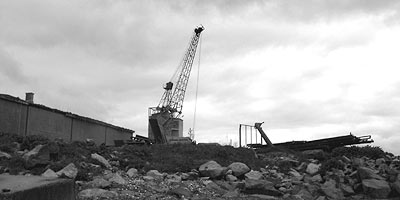Brownfield Land Development Information
“Brownfield” is the term generally used to describe previously developed land, which may or may not be contaminated. Across the UK there are thousands of sites, which have been contaminated by the legacy of previous industrial uses and may present significant risks to human health and to the wider environment.

Recent Government objectives have initiated a move towards redevelopment of brownfield land in favour of greenfield sites (e.g. the Government target of 60% of new housing being developed on brownfield sites) to relieve the pressure on the countryside and green belt areas. Previously, the potential liabilities associated with brownfield development have resulted in an attitude of wariness. However, with careful consideration, and the right advice, it is possible to turn potential liabilities into an asset.
Brownfield land may be derelict land, which can only be redeveloped after the removal of chemical/waste risks, removal of derelict infrastructure or the removal of instability problems.
To date the main method of dealing with brownfield and contaminated sites has been through redevelopment, through the planning process, where the objective of economic benefit is linked to environmental enhancement.
If you are involved in the acquisition of brownfield sites for development purposes it is prudent to undertake an independent investigation of the sites history and the possible impact of former activities on the status of the subsurface soils and groundwater prior to acquisition. In this way, potential environmental risks and associated liabilities can be identified at an early stage. This will enable appropriate risk management, e.g. site remediation, requirements to be taken into account prior to acquisition to ensure that the deal is feasible from a commercial standpoint and that acquisition negotiations take account of any requirements for risk management. By using an appropriately experienced environmental consultant the developer (and any funding institutions) can gain comfort from the fact that the potential environmental risks will have been adequately investigated. Retaining the consultant through the development process will ensure that appropriate measures are taken to mitigate identified risks and that the land is developed in accordance with regulatory requirements and best practice. Thus ensuring that the land is treated in such a way that the end result is suitable for purpose.
In a similar way, if you are considering disposal of a brownfield site from your property portfolio, the use of an appropriately experienced environmental consultant to investigate the site and establish the level of real and/or perceived environmental risks can enhance the value of a site to prospective purchasers as there will be a level of transparency of provided information.
Brownfield land is a matter of considerable interest for all concerned with the planning, development and ownership of land and property. Whilst there is much debate as to the proportion of future development that should take place on brownfield sites, there is little agreement on how much brownfield land there is and where the reserve of brownfield sites are located. Above and beyond these questions of total quantity and spatial distribution, issues have to be addressed related to land condition, the suitability of sites for future use (and the influence of various policies on that end use), ownership, site consolidation and restoration / remediation.
In February 1998, the Government announced a national target for England that at least 60% of new homes are to be built on previously developed (brownfield) land by 2008. This followed an earlier announcement that 4.4 million new households will be required in England by 2016, a figure that has subsequently been reduced to 3.8 million by 2021.
In April 1998 DETR (Department of Environment, Transport and the Regions) began construction of the National Land Use Database (NLUD), dividing land use into some 51 categories. It is envisaged that once the amount and location of brownfield has been established, initiatives can be devised and implemented to encourage redevelopment of these areas, particularly where housing demand is high.
May 2004
Also See:
